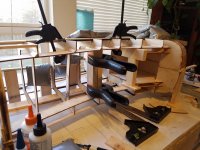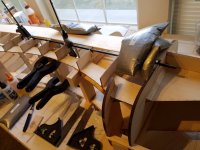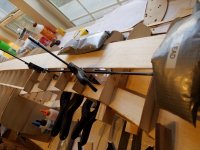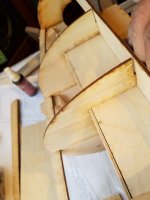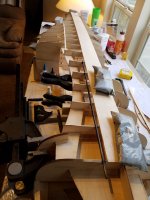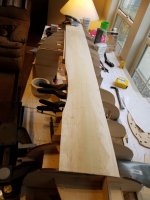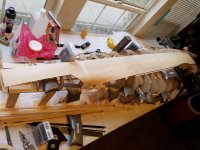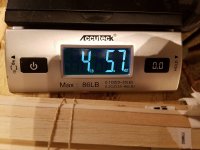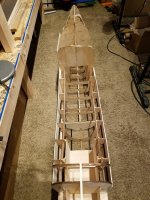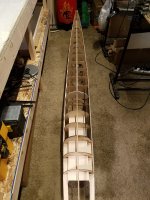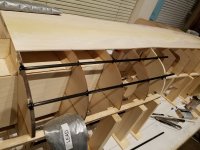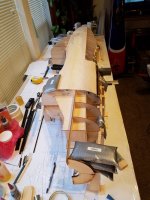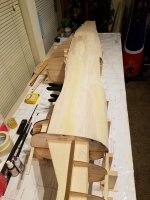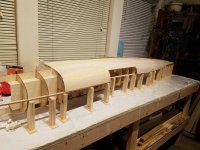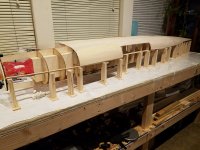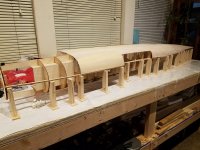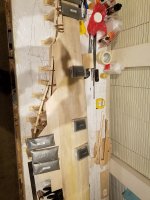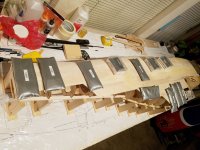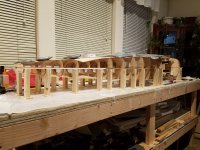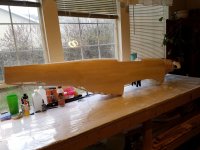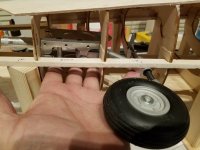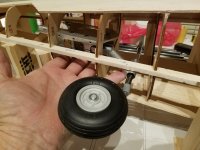Photos from Dec. 26 and 27. This tail gear structure was not really difficult. Just took a little time to figure out how to approach it. I knew I needed solid support for the Sierra gear. I knew also I needed that structure to be light. I just do not want any tail weight on this bird. So this is what I came up with.
I first took from the plans where the tail gear doors are supposed to be located. Not sure this will stay exact, but should be very close.
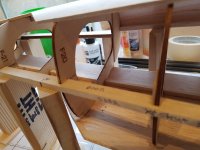
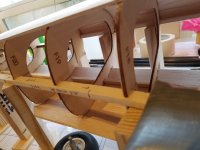
I also decided that I did not want to run my retract air lines and servo leads in "open air" down the middle of the fuse cavity. So I snagged a bag of model rocket tubes from my son. I plan to attach them to the insides of the formers of the fuse to run the air lines and servo leads through. They are light enough and actually will add strength to the sides of the fuse formers.
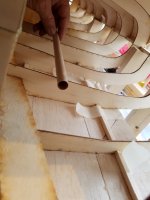
From the DS plans, I traced the required fuse formers so that I could make lite ply doublers for the tail gear to be supported on.
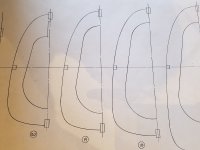
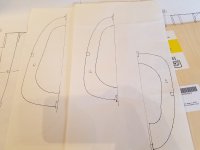
I bought a sheet of 1/8" Birch ply for this step.
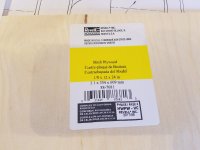
I also was not sure if I needed to use a 1/2" plate for the tail gear to rest on or if a simple 1/4" would be strong enough. I'll decide this later after the fuse tubes.
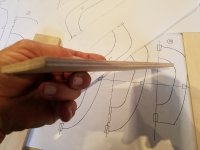
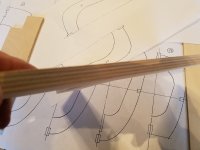
Estes makes some good stuff. And not just for rockets. LOL
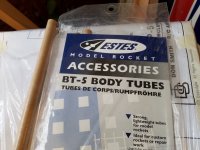
I cut (14) 1"x1" 3/32" light ply tube supports to run the fuse tubes through. Instead of just laying them on the formers then gluing them in place, I used my Dremel to grind a "pocket" for the tubes to rest in then put the supports in place and glued the entire structure in as a unit. Yes, talk about increased side load strength and overall former strength. Wow...very impressive.
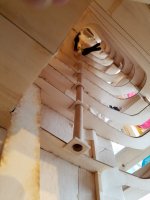
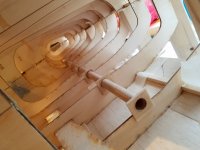
These are the fuse former doublers I cut to be placed at F18, F19 and F20 to support the tail gear. Later I decided to change the location of the gear to keep it as scale as possible. This would include adding a doubler to F21 as well.
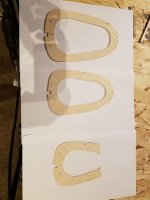
I ultimately decided on the 1/4" ply plate for the gear support plate.
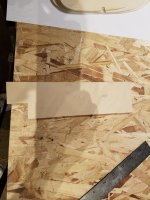
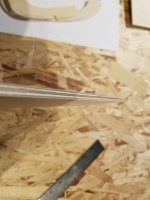
Making a "mock up" plate for the gear.
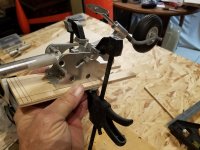
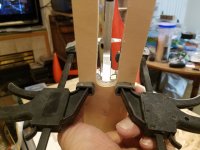
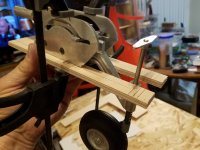
To enable the tail gear to be in the proper scale location and to allow it to retract, it was necessary to remove a portion of F19.
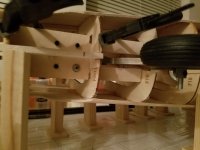
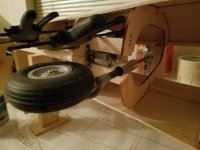
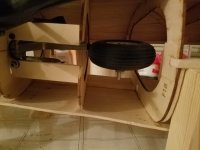
So far my trail fit is good. But not as I really want so a little modification will need to be done.
Ok, I am good with this. I have ample clearance on F18 and I am also getting a full extension/retraction of the gear without contacting any structure.
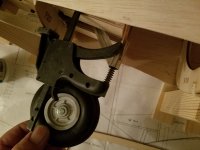
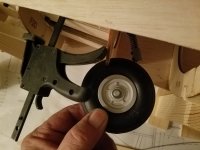
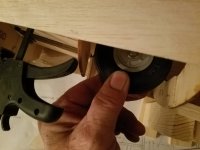
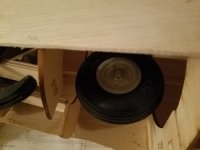
This is the final revised gear plate to go inside the tail structure of the Mustang.
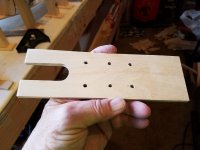
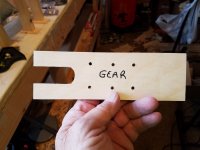
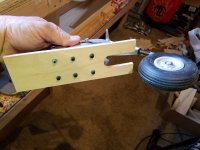
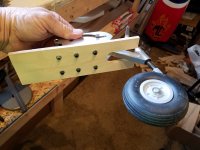
I had planned to use simple rails for the tail gear to bolt to. But I really wanted much more strength for the gear as well as side load on the fuse. So...this is what will be used.
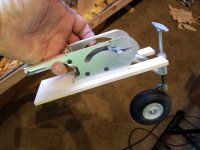
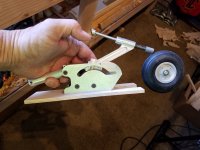
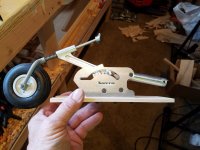
So now it is time to get those doublers glued in place and set the tail gear plate into place.
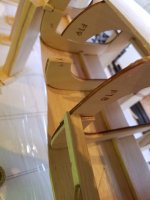
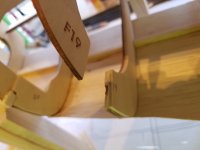
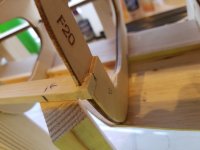
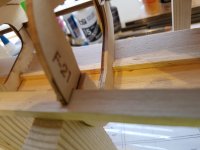
I like the location and it looks like it is going to work great.
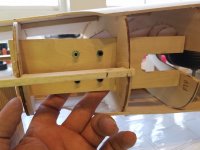
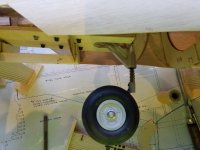
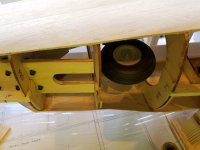
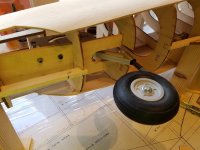
Before permanently gluing in the tail gear structure, I decided it would be a good time to get the remaining fuse tube glued in place.
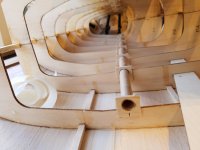
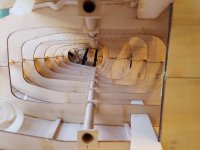
A shot of the nearly completed fuse while it stands on its tail waiting for glue to cure.
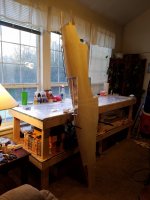
Back to the tail gear installation...
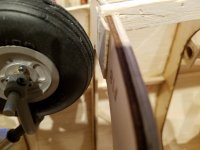
Good clearance so it is time to epoxy in the plate.
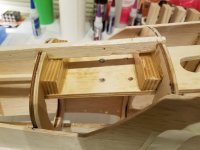
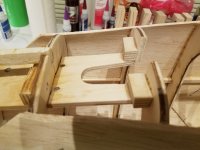
Full extension of the gear...
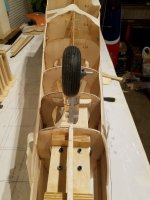
Half way retracted...
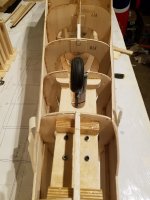
Full retraction of the tail gear...
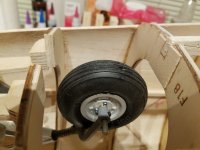
And the best part? Only about one and a half pounds added..."WITH" the tail gear installed.
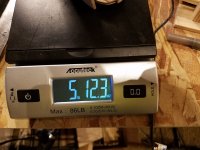
A look down the inside of the fuse with the tail gear extended...
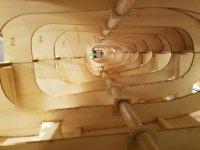
A look with the gear fully retracted...
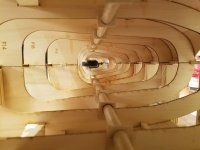
The fuse is really coming along and it is pretty strong as it stands. I am a little worried however of the weight of the Kolm 150 that will be powering this bird. If the plane were being built to support the intended engine choice... A G62 or like, then I would not worry not one bit. Even a 3w 110cs or like would be fine. But anything of more weight bothers me. This is the main reason I added the carbon rods to the fuse. The way they are designed and implemented, they should support the front of the fuse clear back to behind the location of the main landing gear. Which equates to the main gear and the structure throughout supporting the weight of the Kolm. Hopefully, it will work out as I have engineered it to. Guess we will see when I get to the point of installing the 150. Yes, the thought of not using the Kolm has crossed my mind.
I wanted to stay at or under 8 pounds on the fuse when fully constructed. I really think I am going to make it. I have also done a lot..."A LOT" of research on glassing technics and what not. I was very afraid at first of adding too much weight. But really hated the idea of using a plastic covering such as Ultracote on the big Stang. From what I have been seeing so far, glassing will not add any more weight than simple covering. I was also afraid of glassing as I have never done it before. But also from what I am seeing, it is almost as easy as laying out and ironing on covering. So... glassing it will be. Plus, it will add a ton of strength to the fuse. Especially in the nose where I will need it for the Kolm 150.
More to come fellas....But not today.
